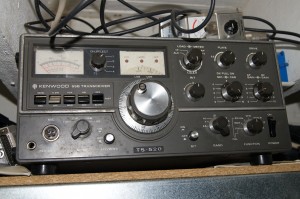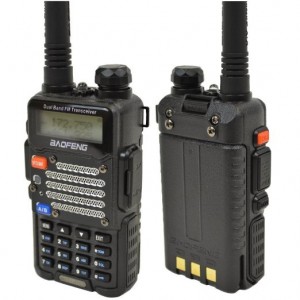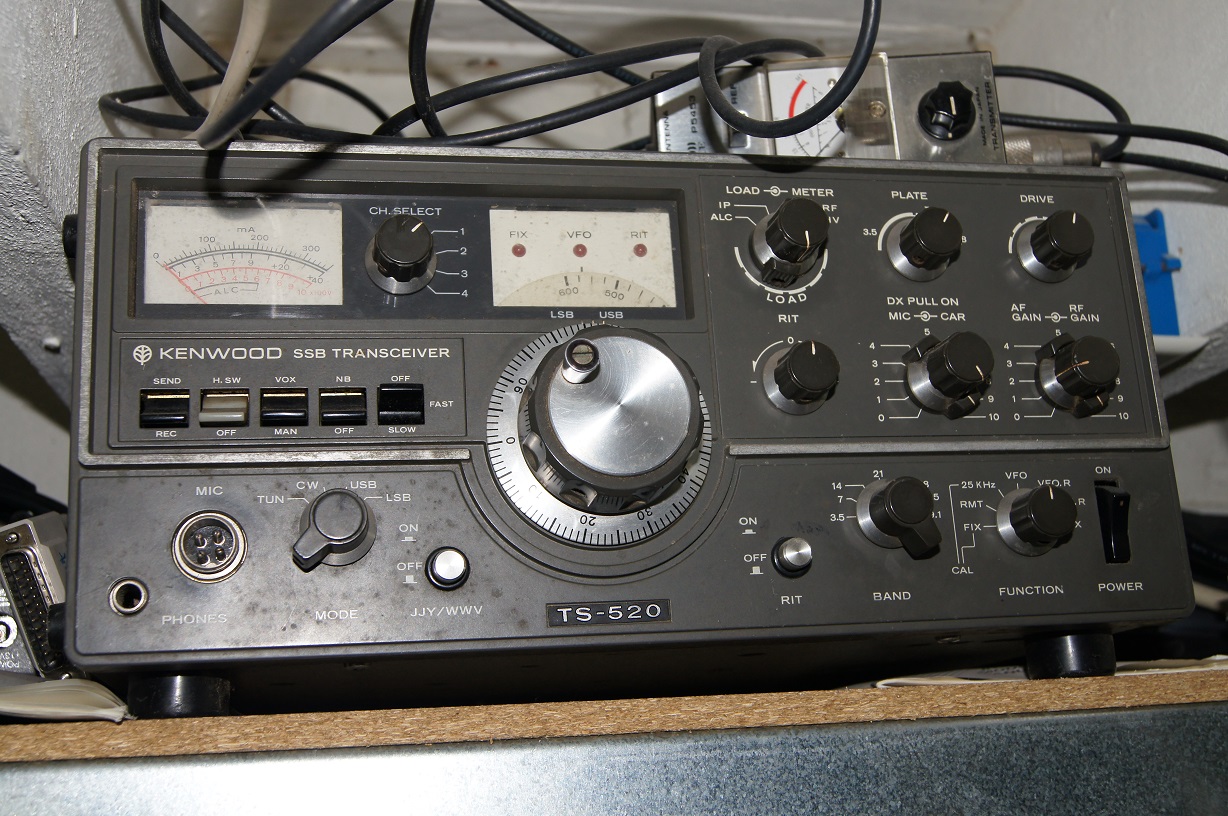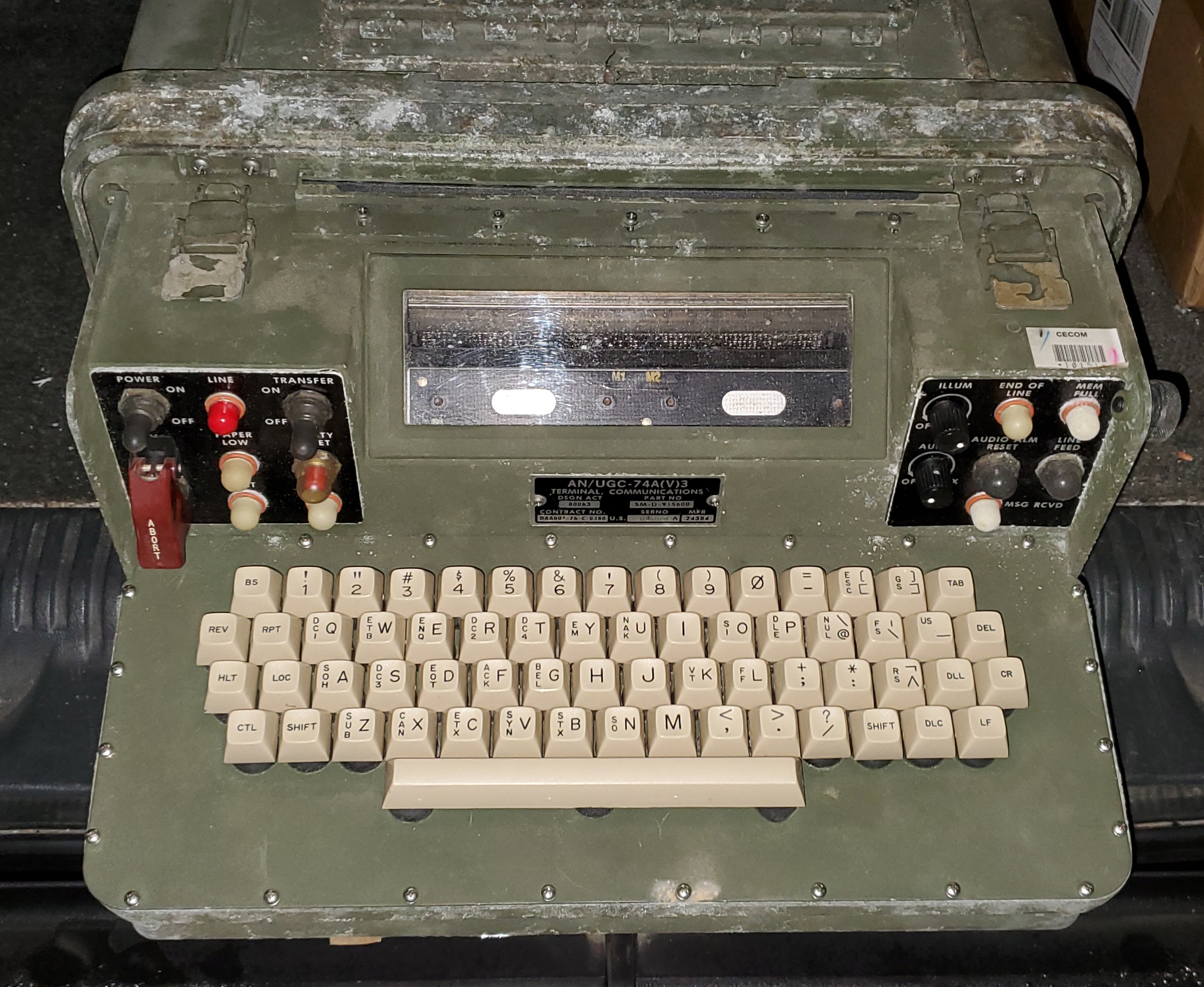This article is the written transcript of the podcast audio found at: http://vintagevolts.com/podcast/Vintage_Volts_Episode_5.mp3
In today’s world of instant and rapid communications, the Amateur Radio Service (HAM radio) is losing its appeal amongst the latest generation of people. A member of that generation might even go so far as to wonder why people who are licensed HAM radio operators would even continue to bother with the service. I first got my HAM radio license in 1987. Believe me, I would be lying if I didn’t think about the possible downfall of HAM radio from time to time. But recent accomplishments during the 4th of July weekend of 2014 were sort of a watershed moment for me, at least as it concerns my history as an Amateur Radio (HAM) license holder.
In HAM radio, people progress through levels of proficiency via specialized testing. An upgrade to the next step in class requires the operator to achieve 74% or better in a test comprised of 35 questions dealing with rules, procedures, and technical proficiency. The highest class of license uses a 50 question test. HAMs who pass the upgrade tests are granted additional operating privileges, like additional authorized frequencies, various modes of operation (CW, voice, and data), and additional power levels for transmitting (up to 1500 watts in many cases). Compare that kind of transmitting power to the 1/2 watt public FRS, or even the 4 watt CB radio limits!
When I got my license, there were five license classes. Along with the written testing requirement for each class, there was also the requirement to understand and decipher morse code (CW) transmissions at an increasingly higher speed, indicated at Words Per Minute (WPM). Here is a quick breakdown of the license classes by name and by CW speed requirements:
- Novice (very limited privileges), 5 WPM
- Technician (first ‘useful’, but somewhat limited, license class), 5 WPM
- General (granted broad range of usage), 13 WPM
- Advanced (adds more frequencies to General), 13 WPM
- Extra (top step which adds more frequencies to Advanced), 20 WPM
The highest license any HAM operator can earn is Extra, which grants all privileges and uses as defined in the FCC Part 97 rules which govern the Amateur Radio Service. As you can see, there was quite a lot of testing to be done to earn that class. There were five written tests and three code speed tests. Once you passed a code speed test, you did not need to take that speed test again for the next license level if the WPM requirement didn’t go up (Novice to Technician, General to Advanced).
I started out with a Novice license like everyone else back in those days, but I did not have a lot of money for equipment, nor space to run large antennas to make use of the frequencies I was privileged to use. The more common frequency band, called “2 Meter”, was reserved for use by Technician class or higher. Less than two months later, I tested for Technician and passed it with flying colors, mostly because I was already a two-way radio operator in the Army and I had the technical skills to pass the test.
Once I earned my Technician license, my progression through the ranks of the hobby stagnated for me. This was partly because I was able to buy a compact radio, cheap, to use the popular 2 Meter band (which was all that I felt I needed), and partly because I somehow had trouble deciphering morse code at the required 13 WPM for the next level. Think of the 2-meter band as the “CB radio” band of the hobby. It’s extremely popular and versatile for mobile and vehicle communications. However, more power can be used than in CB radio and you can reach many more people in any given area. Also, to really take advantage of the operating privileges granted to the higher classes, you would need relatively expensive equipment and plenty of backyard space to string up the required antenna(s).
For my entire HAM career, there was always “something” which prevented me from making the most of the hobby. Specifically, it was space and money. I could not afford additional equipment to make use of extended privileges, and I did not have a suitable area to set up antennas. What I did do to put my license to use was buy a mobile two-way radio, which is about the size of a CB radio, and install it in my car. With this setup, I could talk to other HAM radio operators during my commute to and from work. My commute(s) have averaged 30 minutes each way, which was plenty of time to do a little “rag chewing” (talking). That was perfectly fine for me for over 25 years.
During that time, in the early 1990’s, the FCC dropped the code speed requirement for the Technician license class. While opinions differ on the reasons, most believe that it was done to promote participation in the Amateur Radio Service. I’ll agree that the morse code requirement seemed a bit antiquated, but it also was hard for some people who are unable to comprehend or distinguish the patterns associated with morse code.
The Technician class became the “No-code Tech” class in the vernacular and those with Technician licenses and having passed the 5 WPM morse code tests (like me) were designated “Tech Plus.” The difference between the two pertains to the authorized operating frequencies. No-code Tech could NOT use any of the frequencies and modes on frequencies below 30MHz. Those frequency bands are referred to as “HF bands” (or “shortwave” in laymen terms), and are typically used to communicate around the world with big antennas in the backyard.
No-code Tech operators were allowed to use the popular 2-meter band. I witnessed the growing number of operators shortly after the FCC change. My Dad was even compelled to get his license and get into the hobby. He now has a better radio rig in his car than I have in mine and actively uses it! I also remember the detractors. These would usually be those HAMs who have been Extra (or other higher) class for a while and felt others should still have to go through the same testing rigors they went through to get started in the hobby. I was neutral on the idea. But I welcomed it because it helped increase popularity in the hobby, and provided more people to talk to!

Even in the early 1990’s, I dreamed of earning my Extra class license someday. But it was a “back burner” task because I still needed the proper equipment AND space to take advantage of the privileges. In 2002, I acquired an older, but suitable, HF radio. A fellow HAM saw a Kenwood TS-520 radio sitting in a trash pile at his neighbor’s house and saved it from a horrible demise. He tried getting it to run. It powered up, didn’t make sparks or anything (luckily), and seemed to work, but he could not pick up any signals. Since he already had much better equipment for himself to do the same thing the TS-520 could do, he gave it to me. After a little bit of research, I discovered a wire jumper was missing and after I replaced it, I was able to receive all sorts of signals after connecting a long wire antenna to it. Now I have what I need to take advantage of the higher class privileges!
But I couldn’t really use it because almost all of the frequency bands the radio worked on were out of my Tech Plus operating privileges. That is, except for one band, called “10-meters”, and is in the range of 28 to 28.5MHZ. That is NOT a very large space of frequencies. It’s also one of the noisiest and troublesome bands. I could use it, but only when the atmospheric conditions are “just right”, and most likely at nighttime when they get that way. So in a sense, I was “prevented” from using it. I could also use many of the other HF bands, but in CW, communicating via morse code. It’s a useable mode of operation, but one that I wasn’t particularly fond of using. I did test the transmitter part of the TS-520 (on a frequency I was authorized to use) and verified that it does transmit. But still, I had to pass a 13 WPM code test to be able to upgrade my license to the next class, General. I had no doubts that I could pass the written tests for any of the higher operating classes with the required study, but I still had trouble deciphering the higher code speeds.
Also note that in 1999, the FCC deprecated Novice, Tech-Plus, and Advanced. This left the following operating classes:
- Technician
- General, 13 WPM
- Extra, 20 WPM
The Technician class was still a no-code class and was restricted to frequencies above 30MHz. This put me in a relatively special position. I was Tech Plus, with HF operating privileges, but since I was retitled Technician, I “technically” didn’t have those privileges. I found out (or otherwise understood) later that I was grandfathered into those HF privileges. It just would have been a bit troublesome for me to verify it if another HAM questioned my certification.
The TS-520 got moth-balled, so to speak, until I finally bought a house (with a small yard, unfortunately) and was able to settle down with this hobby. I set the radio up to listen to HAM radio activity, called QSOs, as background chatter in my workshop. In 2007, the FCC made a ruling that code requirements were eliminated for license testing of any class. NOW, I was able to work on getting my license upgrade. But I didn’t do so right away. I still felt the need to be able to use and configure the required equipment to operate in the privileged frequency bands. It just wasn’t a priority in my life at the time.
Set the clock forward several years to the July 4th weekend, 2013, at the W3UU Firecracker Hamfest, where I finally attempted to take the test to earn my General class license. About two months before, a co-worker developed an interest in HAM radio. I told him what it involved to get licensed. The catalyst for him was the ability to buy a functional 2-meter handheld radio that just arrived on the market for only $40, instead of the average $200 for a “more professional” model. I encouraged him to study for his Technician license, and I figured at that time, I’ll provide some peer support and study for my General license.
We both passed our tests! He was a new HAM and started taking advantage of what the hobby has to offer. I did little with my new operating privileges, although I was glad to have them. I still regularly used the privileges that were available to me under my Technician license. I figured I could go camping some weekend and rig up a nice antenna with which to talk to others. However, it was still not a priority to do so.
Several months before the 2014 Firecracker Hamfest, my co-worker had an interest in going for his General license. I considered it a good reason for me to go for my Extra license. Meanwhile, my son studied for his Technician license.
Unfortunately, my son missed by two questions, but there are no restrictions preventing him from trying again. My co-worker passed his General and I managed to pass my Extra! Believe me, The Extra class license is the one in which you’ll study the hardest. I’m not saying it’s impossible, but it is quite challenging. After all, it is a pinnacle of the hobby. I like to think of it in this manner; with only three classes of licenses, I visualize the Technician, General, and Extra equivalent to Bachelor’s, Master’s, and Doctorate degrees.
So with that in mind, let’s go back to my “thesis” about the hobby being a lost art. In reality, it is a lost art in the sense that the technical aspects of the hobby are not as awe inspiring as they once were. There are many more ways of communicating instantly to others, so why would I (or anyone else) have ever considered getting an Extra license at all? Even though there is a growing convergence of HAM radio and the Internet, HAM radio on its own is looking like it might become a lost art.
For me, it was a life goal to upgrade to the top level. There was more of a reason to upgrade as a personal achievement, than to not do so at all. I know now that I’m not restricted in any way on all the allotted HAM radio bands. I also don’t need to take any more tests in the hobby… LOL. For me, it also refreshes the hobby. For the first time, since before I earned my General license, I set my TS-520 on a table on the back patio, ran a long wire antenna from a mini antenna tuner I bought at the Hamfest, and started to use that radio with conviction. An antenna tuner is something that lets you match the operating characteristics of a “less than perfect” antenna to that of the radio itself. If your antenna isn’t electrically matched, you risk damaging your radio’s electronics as part of the transmitted signal energy actually reflects back into the radio. Until several days ago, I never owned an antenna tuner, but for the restricted antenna sizes I can get away with in my backyard, it was absolutely necessary to own one. It was one of those items that can cost $100-$200 new, but in used condition, are quickly sold out at Hamfests. I snagged a small one for $35, and now I’m ready to go again in this hobby. My equipment list is complete enough for me to enjoy the Extra (and General) class privileges.
For the new HAM, or one who might aspire to become one, I say, GO FOR IT! There really is nothing to lose. Think of it as getting your drivers license. You earn it through specialized testing requirements, and it’s yours for life. Just renew it as required (10 years for a HAM radio license). Renewal is free, too. In many cases, the testing is free to the public. Just contact a local HAM radio club for details.
As for upgrades to your Technician license, think of the process of getting a General or Extra as getting a motorcycle certification or other drivers license upgrade. Those are typically just additional proficiency tests, and you keep the certification for life.

If you want to start off cheap, you can earn your Technician license and start off with a radio like the Baofeng UV-5R. It’s a tiny handheld radio that works on the popular 2-Meter band, and is only about $40! But you DO need that HAM radio license to use it. Granted, it is one of those “you get what you pay for” items in the sense that it is a “no-frills” device. Programming them with your local HAM radio repeater frequencies is a bit cumbersome, but there are plenty of online (and HAM radio club) resources to help you through that. The more popular professional models like Yaesu, Icom, Alinco, etc. have a starting price between $150-$200, and are typically more user friendly. But if you’re the least bit interested in pursuing the HAM radio hobby, your total cost, with radio, could be less than $50, and you’ll be able to be active on the most popular part of HAM radio communications. If you find the hobby to be less than what you were expecting, you’re not out a lot of money.
So, come to think about it, maybe HAM radio isn’t a lost art after all. Maybe it’s only struggling to find a new focus, driven by the market, new technologies, and a new generation of people.
Thank you for reading,
“73”
Links:
- Velveeta “HAM Radio” commercial: http://youtu.be/ku2VyNq7JXc
- W3UU Harrisburg (PA) Radio Amateurs’ Club: http://www.w3uu.org/
- Kenwood TS-520 in action: http://youtu.be/leXkdeNUiJ4
- Baofeng UV-5R unboxing and in action: http://youtu.be/d4zafPwr0Gs
- The meaning of “73” and other HAMSpeak: http://www.qrz.com/page/hamspeak.html



